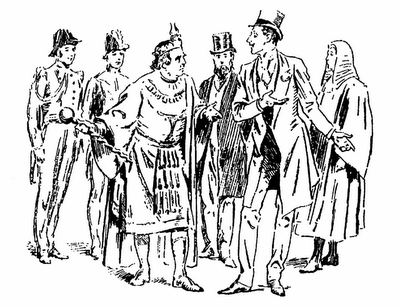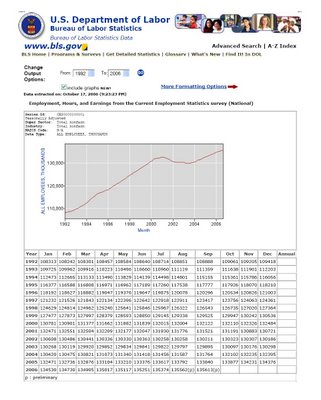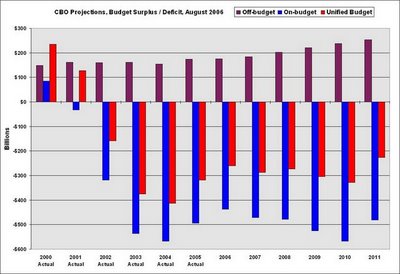There's been a debate, of sorts, between Grover Norquist's Americans for Tax Reform and the folks over at Citizens for Tax Justice over the question of whether state tax rates cause individuals to migrate from higher tax states. The ATR paper is
here and the CTJ argument, linked to three studies of specific states, is on its weblog
here.
The ATR analysis is singularly unconvincing. It includes a nifty chart sourced to "Vedder" with no additional information that would allow one to verify the chart's accuracy or to make a separate analysis to determine whether other factors were at work. (Presumably, "Vedder" is
Richard Vedder of Ohio University and the Heartland Institute.)
The CTJ web posting cites three studies, from the
Iowa Policy Project,
New Jersey Policy Perspective, and
Policy Matters Ohio, respectively.
The Iowa study was rather narrow in scope. It was designed to address an argument made in support of a particular piece of legislation before the Iowa legislature that would have provided various income tax exemptions to the elderly. The study showed, convincingly I think, that Iowan income tax rates did not cause significant out migration of the elderly from the state. However, the paper did not fully address the more basic question: Do taxes, in general, cause emigration from high to low tax states?
The New Jersey study dealt with the broad question of whether income tax caused net emigration from that state. It concluded:
It is impossible to tell from the IRS data the reasons why people leave or come to a state. However, the numbers for New Jersey would seem to suggest that the regional and national economic situation is an important force, especially in view of the fact that in most years outflow and inflow either rise together or fall together.
But it is equally impossible to interpret the data as in any way showing that changes in New Jersey's income tax rate-up or down-have an impact on whether high income families-or any families-choose to come to the state or to leave it.
One could just as easily, and perhaps more plausibly, conclude that the tax driving people out of New Jersey is the local property tax, since this tax takes a higher percentage of the yearly income of low- and middle-income families than it takes from the wealthiest-so that an increase of even a few hundred dollars is more noticeable to those families than an income tax increase that amounts to a relatively smaller percentage of a wealthy family’s income.
Finally, the Ohio study also limited itself to the affect of income tax on migration and concluded that "migration does not appear to be linked to income tax policy. Policymakers seeking to prevent outward migration should look to policy other than income-tax policy to alter the trend."
Clearly, taxes do have some effect on interstate migration. For instance, I know from my practice that state estate and inheritance taxes will cause some high wealth individuals to relocate. However, it would be virtually impossible to design a study that could isolate and measure the effect that these taxes have on migration. There are likely to be a large number of other factors at work and, more importantly, the number of people affected by these taxes is statistically small.
One of the problems with all of the studies is that there are generally so many factors that bear on an individual's decision to relocate it is virtually impossible to isolate the affect attributable to taxes. For instance, do people move to low tax states to avoid taxes in their state of origin, to enjoy a warmer climate, or to take a job at a non-union factory because work at older, union manufacturers has dried up? And, to the extent that the move is motivated by tax considerations, to what extend are the emigrants fleeing property tax assessments that fund primary and secondary education? If this last factor proves decisive, to what extent are the emigrants really defaulting on their responsibilities (
i.e., "The state already paid for my kids' education. The hell with the next generation.")
It is anticipated that Maryland will have a huge increase in population over the next 10 to 15 years caused by the expansion of Aberdeen Proving Grounds, the NSA facility at Fort Meade, and the military's biological research facilities at Fort Detrick. Under these circumstances, unless Maryland's tax system becomes outright confiscatory, there will be little, if any, affect on immigration to the state. The population will increase because there are good, well-paying jobs available.
I think that, in general, similar, non-tax forces are at work causing either immigration to or emigration from various states. With some isolated exceptions (Nevada comes to mind), I think that the amount of taxes imposed on individuals is of little moment in determining emigration or immigration. But, as yet, I have little to go on in reaching that conclusion other than my own intuition.





